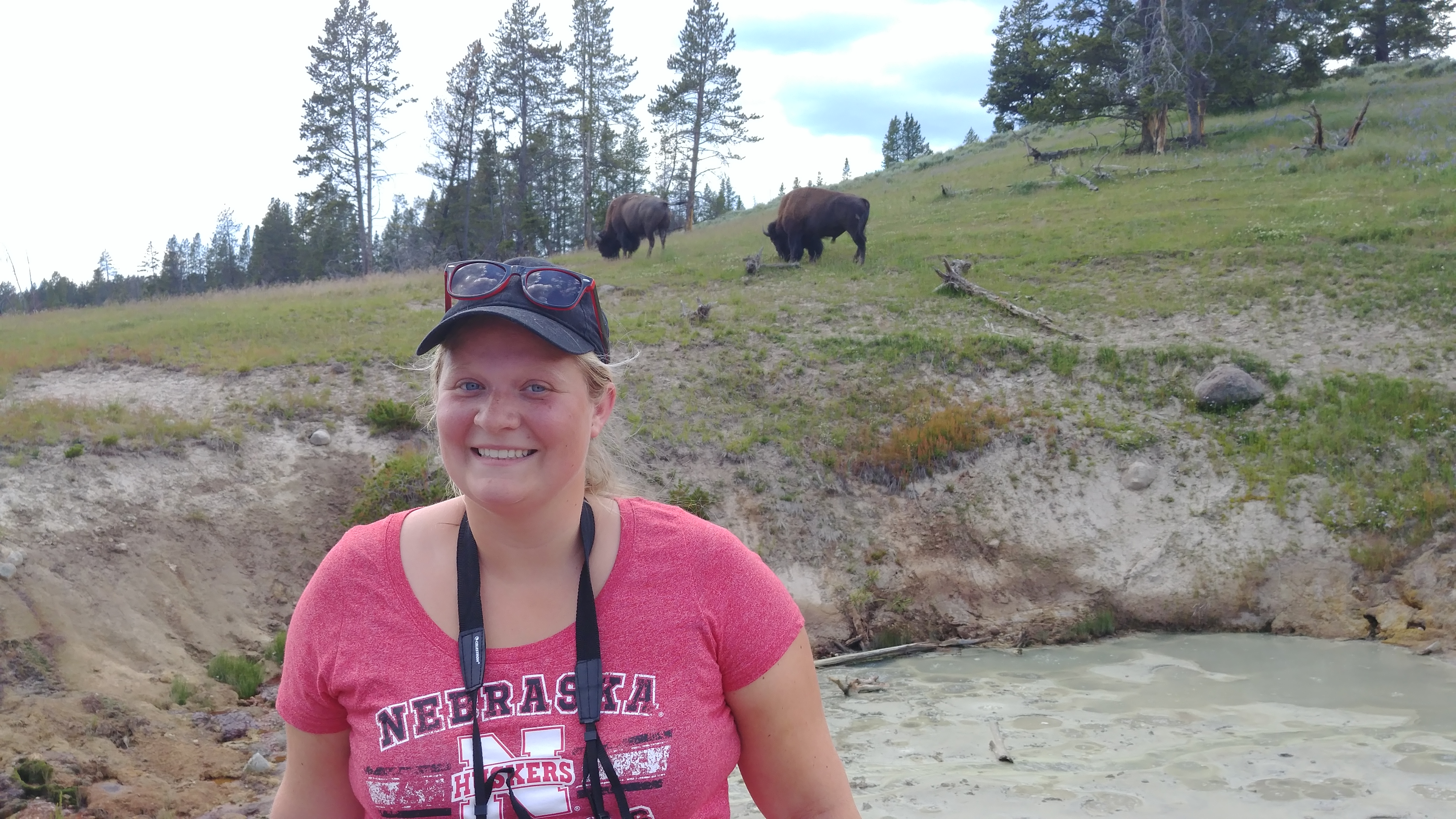
The black bear cub trailing Kelly Willemssens’ crew had remained at a safe distance as the young researchers roved through Yellowstone National Park.
But a related bear encounter — this one at the Wick Alumni Center — was of a much closer kind. As Willemssens played audio of a Yellowstone tourist alerting the team to their furry follower, her audience let loose a sleuth of small teddy bears that landed near her feet.
And with that show of appreciation — the event’s unique take on tossing flowers to performers — the University of Nebraska-Lincoln’s third annual Science Slam was all but decided.
Equipped with a shock-yellow vest, binoculars and a walking stick, the graduate student from Nebraska’s School of Natural Resources joined five other participants in addressing a simple prompt: When did you first begin to feel like a real scientist?
Their answers came in the form of short presentations designed to entertain, inform and help the participants — five grad students and a postdoctoral researcher — sharpen their science communication skills before an audience of nearly 100.
Willemssens won the audience vote with her tale of a research expedition to Yellowstone, where she tracked down tiger beetle specimens to better understand how the species withstands the extraordinary heat and acidity that comes with living on a super-volcano.
The Belgian native also competed at the university’s inaugural Science Slam in 2016, an experience that she said taught her well. (View the video of her talk.)
“I took (lessons) from my experience that first year to try to make it as fun as possible,” Willemssens said. “I was actually over-prepared last time. I was too serious – following the slides meticulously, putting a joke in only every once in a while.
“I tried to make it as interactive as possible (this time). The best ones are all about telling stories, so that’s the approach I tried to take.”
Her competitors did the same. Physics student Karl Ahrendsen relayed the story of how dog-sitting for a friend — and devising experiments that included tracking the food intake and accompanying “output” of his canine companion — gave him new perspectives on what it means to be a scientist.
“What I realized was that my concept of what a scientist was got confused with the public perception of what a scientist is,” Ahrendsen said. “Being a scientist isn’t about the conversations that I have; it isn’t about the knowledge that I gain; and it’s not about the equations that I use. Being a scientist is about asking questions and collecting data in a methodical way to get answers to those questions.”
Andrew Conner got the crowd’s attention when he dumped a batch of lima beans on the floor to illustrate the challenge of identifying specific patterns among so-called twin primes: prime numbers, such as 11 and 13, that reside just one number apart. He also laid out why 3-5-7 is the only prime triplet — a learning process that helped cement his own love of math.
“If you want to do something startlingly beautiful in math, you don’t need a lab; you don’t need pipettes; you don’t need equipment,” Connor said. “All you need is a pen, paper and an idea — and the pen and paper are optional.”
As a sociology student, Alice MillerMacPhee said she feels most like a scientist when challenging the conventions of her research area: social inequality. MillerMacPhee emphasized that the concept of intersectionality — overlap among the social effects of race, gender and other categorizations — originated from activists rather than scientists. And she urged her colleagues to question approaches that separate theory from practice or put research above activism.
“We must do better at centering those people at the margins,” she said.
Those efforts can take place even at the holiday dinner table, as postdoctoral researcher Hernán Vázquez Miranda made clear while wearing a “Hate Will Never Win” T-shirt. He recounted how an uncle who was visiting for Christmas claimed that homosexuality is unnatural and challenged Vázquez Miranda to name an animal that engages in gay behavior. Vázquez Miranda surprised his uncle with a long list that included spiders, butterflies, penguins, deer, lions and orangutans.
Chemistry student Kenneth Hipp donned a white lab coat at the outset of his talk, briefly outlining his work on disease-detecting biosensors. But he then revealed that tutoring a fellow student — and later seeing her teach classmates a chemistry concept that had once stymied her — made him realize that his future lies not in the lab but the classroom.
“That’s when I feel like a scientist: whenever I’m sharing what I’ve learned with other people.”
Scott Schrage, Nebraska Today